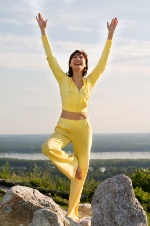 Today we begin a solid series on an amazing health secret from ancient Chinese Medicine: Qigong. Here in part one, let’s look at what it is and what its main goal is in your body.
Today we begin a solid series on an amazing health secret from ancient Chinese Medicine: Qigong. Here in part one, let’s look at what it is and what its main goal is in your body.
Qigong is an alternative healing therapy. Let me give you an idea of what it can do with this new study. A group of older adults practiced a Qigong/tai chi mix for six months. (Tai chi is an offshoot of Qigong.) They interviewed eight selected participants who had decided to continue with the practice long after the study ended. Why? The older adults reported physical, mental, emotional, social and spiritual benefits. They also described complex multidimensional experiences. They felt a wide variety of perceived benefits, the most meaningful being a sense of body-mind-spirit integration.
Clearly it can be a life-changer.
Qigong is so important that it is actually an ancient pillar of Chinese medicine, alongside acupuncture and herbal medicine. Take a glimpse in parks in villages and cities across China (and, increasingly, North America). Every day, you’ll see people performing graceful, slow movements, holding postures for minutes on end. They are doing Qigong, a daily part of life usually performed in the morning to ready the body for the day ahead.
PLUS: Tai Chi For a Good Night’s Sleep
The goal: to get the flow of “Qi,” the life energy, as healthy as possible through all parts of the body. Doing so gets you in an optimal physical state, as well as a calm, clear mental state. In North America, Qigong isn’t yet as popular as yoga, Pilates, or even tai chi, but this is no indication of how powerful Qigong can be.
Archeologists have found engravings about Qigong that go back as far as around 600 B.C., when China was under the Zhou dynasty. It shows the theory and practice behind Qigong, presumably as a way to pass it along through the generations. The legendary Yellow Emperor practiced these exercises every day and is said to have lived well beyond his 100th birthday. About 600 years later, a silk painting showed a series of Qigong postures with descriptions about the benefits you got from each.
Mostly Qigong has survived by being passed along through families and being continually practiced by monks in monasteries. Many called it the “inner elixir” of life. Schools eventually developed, and thousands of Qigong exercises were recorded and practiced. Masters of the art have come and gone.
In the past few decades, the world has opened up to this form of exercise. Chinese masters have traveled to Europe and North America, gaining a wider and wider audience. In fact, in cities, it’s not uncommon to see people performing it in the morning hours — not only Chinese people, but Westerners as well.
